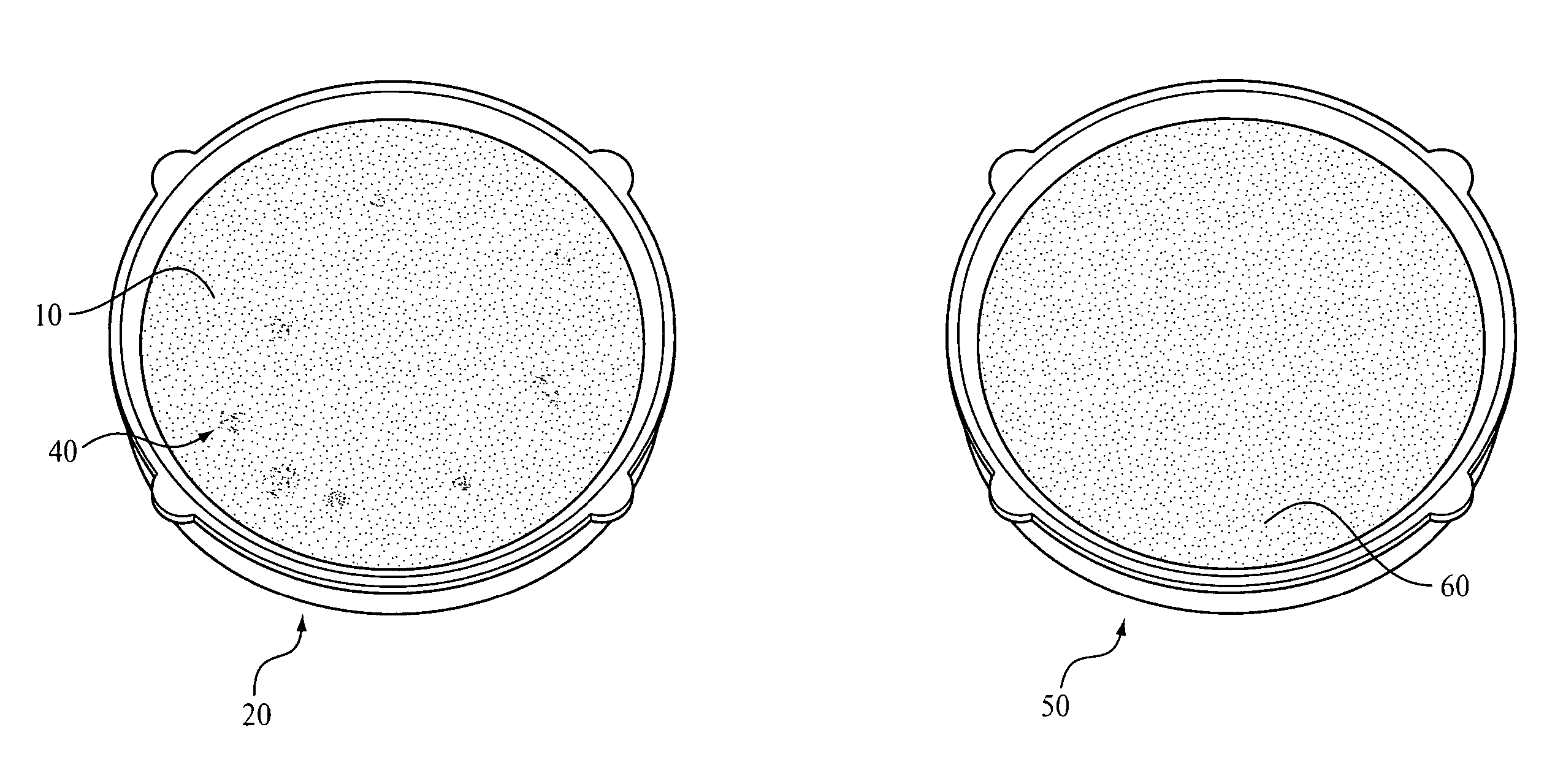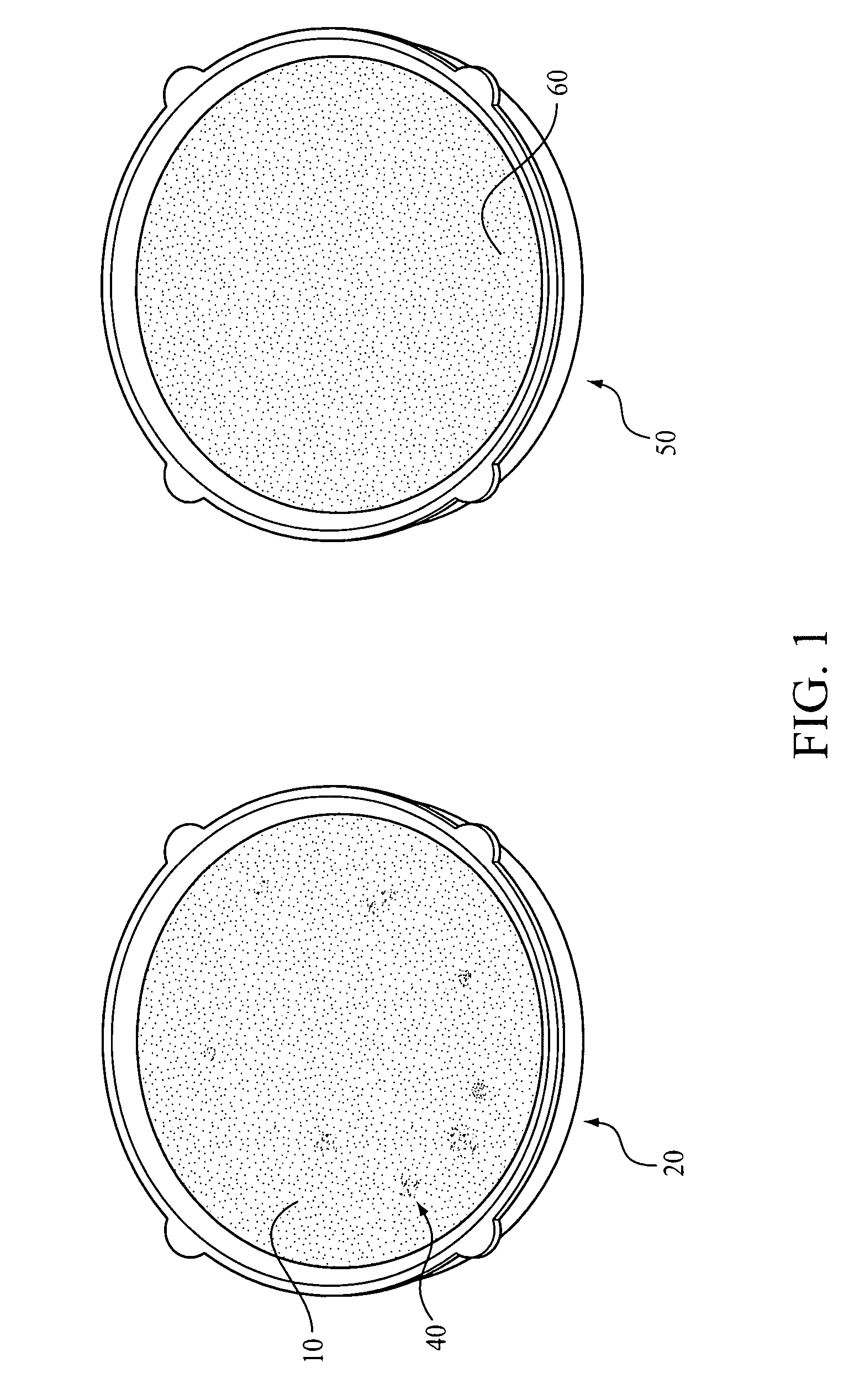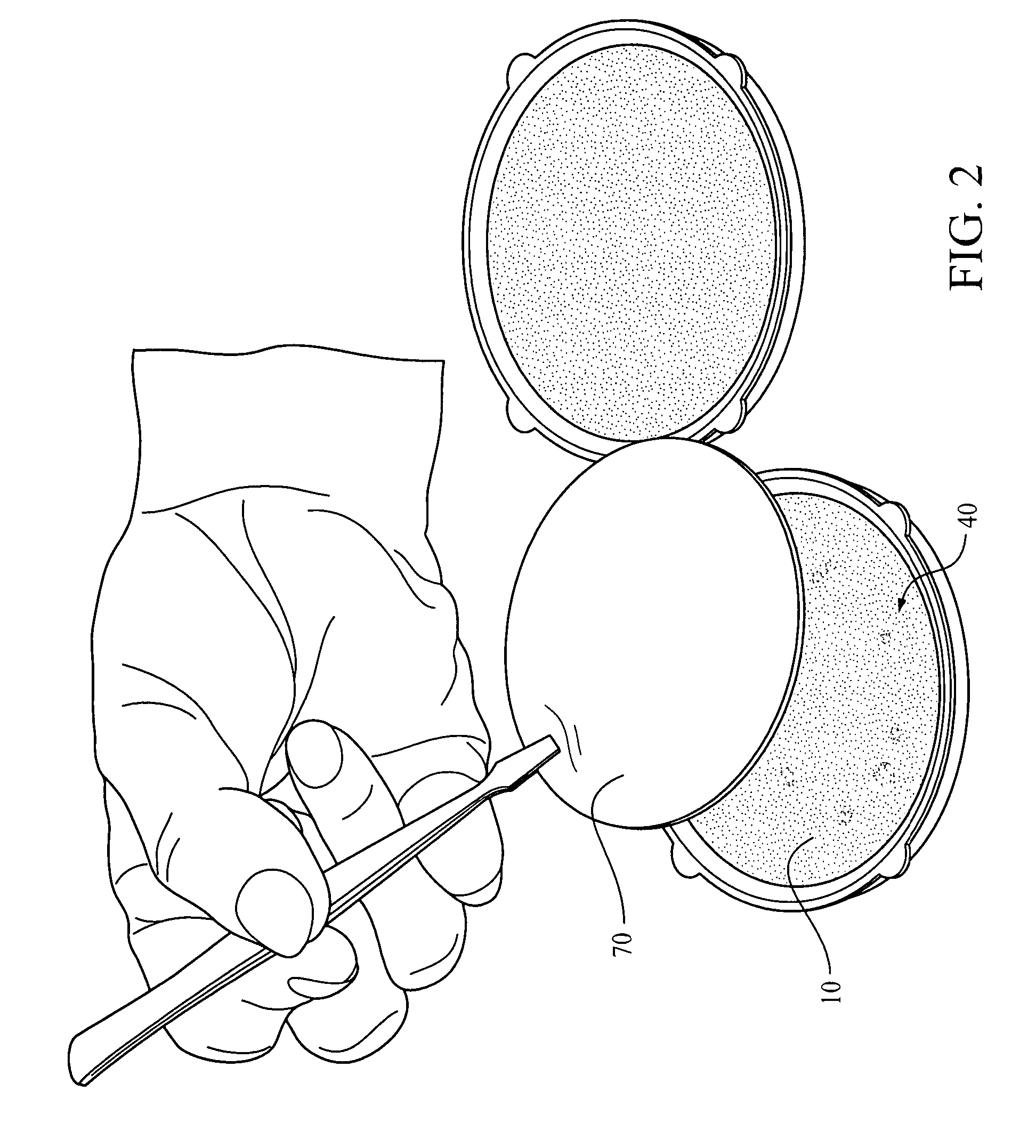Method and Medium for the Rapid Detection of E.Coli in Liquid Samples
- Summary
- Abstract
- Description
- Claims
- Application Information
AI Technical Summary
Benefits of technology
Problems solved by technology
Method used
Image
Examples
Embodiment Construction
[0023] Throughout the specification, the term “comprising” is used inclusively, in the sense that there may be other features and / or steps included in the invention not expressly defined or comprehended in the features or the steps specifically defined or described. What such other features and / or steps may include will be apparent from the specification read as a whole.
[0024] Referring now to FIG. 1, in accordance with standard, well-known procedures, water to be tested is vacuum forced through a sample filter 10, preferably a 47 mm filter HAWG, (Millipore, Bedford, Mass.) with a pore size of 0.45•m. This sample filter 10 is then placed on a growth place 20 and incubated for 18 to 24 hours at 35° C., using a growth medium (not shown) such as m-Endo LES according to well-known procedures. While other growth media such as mFC and mHPC could also be used, m-Endo LES had the best combination of speed and cost.
[0025]FIG. 1 demonstrates a growth plate 20 subsequent to incubation with b...
PUM
 Login to view more
Login to view more Abstract
Description
Claims
Application Information
 Login to view more
Login to view more - R&D Engineer
- R&D Manager
- IP Professional
- Industry Leading Data Capabilities
- Powerful AI technology
- Patent DNA Extraction
Browse by: Latest US Patents, China's latest patents, Technical Efficacy Thesaurus, Application Domain, Technology Topic.
© 2024 PatSnap. All rights reserved.Legal|Privacy policy|Modern Slavery Act Transparency Statement|Sitemap



